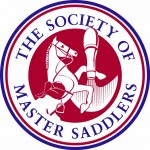Posted: 30th September 2015 | Back to news feed

In this feature we look at the different parts of the bridle and the component pieces of various types of bridle.
The simplest form of bridle is the snaffle which consists of a headpiece and throatlash, browband, cheek-pieces attached to the headpiece, a noseband, bit and reins.
The headpiece has the throatlash attached to it and also the fastenings for the cheek pieces. These lay flat against the horse’s cheeks and attach to the bit at the bottom. When assembling a bridle, the browband should be put on before fastening the cheekpieces. It attaches to both sides of the headband and sits above the cheekpiece straps. When fitted on the horse, it should be long enough to not pinch the back of the ears or cause rubbing behind them.
If a noseband is to be worn it slides through the inside of the browband and underneath the headpiece and is fastened on the left hand side usually. The side straps sit just in front of the cheek-pieces, whilst the actual noseband, if a cavesson, should lay about two fingers breadth below the prominent cheek bone to avoid rubbing. Some modern bridle styles have the noseband fitted over the top of a padded headpiece or attached to extra straps on the headpiece with a buckle each side.
Reins should be attached to the bit and if the fastenings are billets they should be secured on the inside, but if (conventional) buckles, these should be fastened on the outside. This is the same for all fastenings on the bridle.
On a simple snaffle bridle, there are a number of different bit options to choose from but they are mainly based on a few primary styles. These are the loose ring, eggbutt, D-Ring or full-cheek with either a straight bar, jointed or double jointed mouthpiece.
Besides the simplest cavesson, there are different types of noseband that can be used with a snaffle bridle or with other, stronger bits. The drop noseband sits lower than the cavesson, with the back strap sitting under the bit. This is designed for horses that open their mouth or cross their jaw. Care must be taken to avoid fitting the noseband too low on the nostrils as this will interfere with breathing.
Alternatively, the flash noseband can also help prevent a horse from opening his mouth and consists of a cavesson noseband with a thinner strap attached which fastens around the horse’s nose. These three nosebands are dressage legal.
The grakle noseband is useful for stopping the horse crossing his jaw, with the lower strap fitted like a flash strap and the top one sits diagonally across the horse’s cheekbone, forming a ‘figure of eight.’ Another type of grakle is the Mexican or High Ring grakle where the top straps are attached to rings which sit close to the eyes on the flat part of the horse’s cheeks.
Moving on from the snaffle bridle, the double bridle has two bits called the curb and the bridoon (which is a snaffle bit with smaller rings). A curb chain attaches to the curb bit and lays in the horse’s chin groove. Two sets of reins are used, one for each bit and the top rein which attaches to the bridoon should usually be thicker.
This type of bridle should only be used by experienced riders who have the skills to effectively utilise it. A double bridle should only be used with a plain noseband, but different styles including padded and crank can be used and can also come in different widths to suit the horse.
Be sure to get the right bridle for your horse, as it is often tempting to go with what’s fashionable but it’s always best to choose the most suitable option for you and your horse.
Information about the Society of Master Saddlers can be found on the website: www.mastersaddlers.co.uk or telephone 01449 711642.

The Equestrian Index newsfeed is compiled from articles submitted by advertising members and expresses the opinions of those members. Watsons Directories Ltd shall not be held liable for any inaccuracies or mis-statements therein.